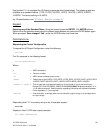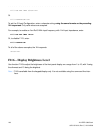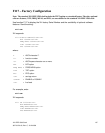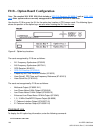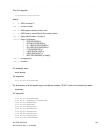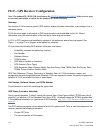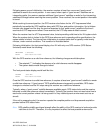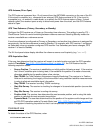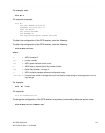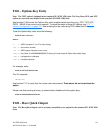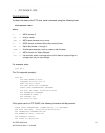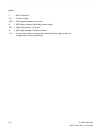XLi IEEE 1588 Clock 111
997-01510-03, Rev. C, 12/12/2006
2
5
1
SSSSSSSSSSSS SSSSSSSSSS SSSSSSS S SSS S SSSSS S
Following power-up and initialization, the receiver requires at least four concurrent “good current”
satellites to resolve its current position. In rare cases, when a pair of “good current” satellites are on
intersecting paths, the receiver requires additional “good current” satellites or waits for the intersecting
satellites to diverge before resolving the current position. Once resolved, the current position information
is saved.
While resolving its current position, the GPS receiver also listens for the UTC leap-second offset
periodically transmitted by GPS satellites along with GPS time and position information. Up to thirteen
minutes may elapse from the time the receiver acquires its first “good current” satellite to the time it
receives the UTC leap-second offset. Once received, the UTC leap-second offset is saved.
When the receiver has the UTC leap-second value, it starts providing valid time to the XLi system clock.
When the system clock is locked to the GPS time reference and is operating within specifications, the
system status is locked. The interval from initialization to system status lock is typically under twenty
minutes, under nominal conditions. This transition is illustrated below.
Following initialization, the front panel display of an XLi with only one GPS receiver (GPS Status:
Unlocked) would show the following:
UNLOCKED * GPS PRI
LOCAL 365:16:01:05 1969
With the GPS receiver as a valid time reference, the following changes would take place:
• The asterisk (“*”) indicating the absence of a valid reference would disappear
• The system status would change to locked
The front panel status display would look like this:
LOCKED GPS PRI
LOCAL 233:18:21:29 2004
Once the GPS receiver is a valid time reference, it requires at least one “good current” satellite to remain
a valid time reference. If “good current” GPS satellites become temporarily unavailable, GPS status
changes to unlocked and the XLi stops using the receiver as a valid time reference.
Typically, when a “good current” satellite becomes available again, GPS status locks and the receiver
becomes a valid time reference almost immediately. Typically, the receiver does not need extra time to
resolve its current position unless it is being used in a very mobile/dynamic environment such as an
aircraft.
If the unit is powered-cycled, the receiver repeats the complete position and leap-second acquisition
process before GPS status locks.
Note: GPS satellite visibility and signal strength affect the ability of the GPS receiver to lock and provide
valid time to the XLi. Therefore, it is very important to select the best possible antenna site.



